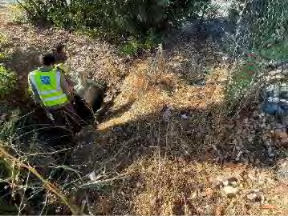Monitoring is an essential component of stormwater management and other programs to protect and improve water quality. EOA has decades of experience developing and implementing monitoring programs designed to address specific management questions and compliance needs. With our support, EOA clients such as large San Francisco Bay Area countywide stormwater management programs have achieved perfect records of compliance with stormwater NPDES permit monitoring requirements. EOA also coordinates water quality monitoring with our technical support for developing and implementing control programs that target specific pollutants of concern (e.g., PCBs, mercury, bacteria).
EOA extensively uses Geographic Information System (GIS) tools to conduct spatial analyses that inform the interpretation and communication of environmental data generated through these types of projects.
HIGHLIGHTED PROJECTS

Low Impact Development (LID) Effectiveness Monitoring
Santa Clara Valley Urban Runoff Pollution Prevention Program (SCVURPPP) / San Mateo Countywide Water Pollution Prevention Program (SMCWPPP)
EOA works with Santa Clara Valley Urban Pollution Prevention Program (SCVRUPPP) and San Mateo Countywide Water Pollution Prevention Program (SMCWPPP) on LID effectiveness monitoring projects to satisfy Municipal Regional Stormwater NPDES Permit (MRP) requirements. EOA , Inc. collected and monitored composite samples for total mercury, total polychlorinated biphenyls (PCDs), total suspended solids TSS), per- and polyfluoroalkyl substances (PFAS), total petroleum hydrocarbons (TPH), total dissolved copper, total hardness, and hydrogen ion concentration (pH).
Most recently, as part of the 2024-2025 work year, EOA, Inc.:
- Created a robust LID monitoring plan to complete sampling events during the permit term, completed ongoing maintenance, and addressed concerns raised during work year 2023-2024.
- Facilitated the Technical Advisory Group (TAG) of impartial science advisors and Water Board staff that advised on specific monitoring plans.
- Implemented flow and precipitation monitoring methods, such as influent collection trays and calibrated tipping-bucket rain gauges.
- Drafted and submitting the Urban Creek Monitoring Report as required by MRP provision C.8.h.iii.
Specific to work year 2024-2025, EOA, Inc. successfully identified data points for future comparison, monitored influent and effluent rates at multiple sites between two counties, and identified clear objectives for future work years.

SF Bay Regional Creek Status Watching Our Watersheds (WOW) Trash Flow Monitoring Projects Program Design
Alameda Countywide Clean Water Program, Contra Costa Clean Water Program, San Mateo Countywide Water Pollution Prevention Program, Santa Clara Valley Urban Runoff Pollution Prevention Program, Solano Stormwater Alliance
Since 20XX, EOA, Inc. has led the efforts with the ongoing Watching Our Watersheds (WOW) Trash Outfall Monitoring Project (MP) to help achieve trash flow reduction goals required by the Municipal Regional Stormwater NPDES Permit (MRP) 3.0, provision C.8.h.iii. In partnership with and across several countywide programs during the 2024-2025 work year, EOA, Inc.:
- Sampled three storm events at 10 monitoring locations and collected 30 samples using trash net devices for trash sampling and monitoring water flow with water level sensors in outfall pipes.
- Performed qualitative assessments of catchment areas, including observations of trash sources and trash controls.
- Categorizing and measuring total trash collected per catchment area during each storm event.
- Calculated annual trash loading rates per catchment site based on average trash volume per sampled wet weather event, water flow data per wet weather event and total events in a rainy season.
The work performed by EOA, Inc. on behalf of clients identified successful compliance to the MRP and identified specific areas of focus for the 2025 Work Year.